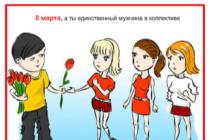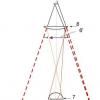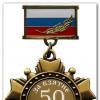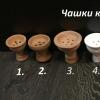Issue approved by Decree State Committee USSR for labor and social issues and the Secretariat of the All-Union Central Council of Trade Unions dated January 31, 1985 N 31 / 3-30
(as edited by:
Decrees of the USSR State Committee for Labor, the Secretariat of the All-Union Central Council of Trade Unions dated 12.10.1987 N 618 / 28-99, dated 18.12.1989 N 416 / 25-35, dated 15.05.1990 N 195 / 7-72, dated 06.22.1990 N 248 / 10-28,
Decrees of the State Committee for Labor of the USSR 12/18/1990 N 451,
Decrees of the Ministry of Labor of the Russian Federation of December 24, 1992 N 60, of February 11, 1993 N 23, of July 19, 1993 N 140, of June 29, 1995 N 36, of June 1, 1998 N 20, of May 17, 2001 N 40,
Orders of the Ministry of Health and Social Development of the Russian Federation of July 31, 2007 N 497, of October 20, 2008 N 577, of April 17, 2009 N 199)
Heating point operator
§ 262. The operator of the heat point (2nd category)
Job Description. Ensuring uninterrupted and economical operation of heat network boiler plants, crumpled steam stations, solar and geothermal plants with a capacity of up to 42 GJ / h (up to 10 Gcal / h), located outside the service area of the main units. Maintenance of the set temperature, pressure of network water and steam. Cleaning of crumpled steam and deaeration of water. Monitoring the operation of network and condensate pumps. Performing switching operations in thermal circuits. Identification and elimination of malfunctions in the operation of equipment. Elimination of emergency situations. Maintenance of operational documentation. Participation in the repair of a serviced boiler plant, a crumpled steam station, solar and geothermal installations.
Must know: device and principle of operation of the installed equipment; thermal diagram of the heating plant; work schedules and thermal conditions of consumers; installation sites, purpose and principle of operation of instrumentation and regulators; elementary fundamentals of heat engineering.
With a capacity of heating network boiler installations, crumpled steam stations, solar and geothermal installations over 42 to 84 GJ / h (over 10 to 20 Gcal / h) - 3rd category.
With a capacity of heat network boiler installations, crumpled steam stations, solar and geothermal installations over 84 GJ / h (over 20 Gcal / h) - 4th category.
Comments on the profession
The given tariff and qualification characteristics of the profession " Heating point operator» are used for billing works and assigning tariff categories according to article 143 Labor Code Russian Federation. Based on the above performance characteristics and requirements for professional knowledge and skills is compiled job description the operator of the heat substation, as well as the documents required for an interview and testing when applying for a job. When compiling work (job) instructions, pay attention to general provisions and recommendations for this issue of ETKS (see
Chairman Head of the organization
____________2002 ________________2002
Protocol No.
Instruction
on labor protection for
operator
thermal point.
General safety requirements.
Workers at the age of at least 18 years old who have passed a medical examination and safety briefing are allowed to work as an operator of a heat point.
Prior to being assigned to independent work, the operator must complete training and pass a knowledge test in the commission on electrical safety rules with the assignment of the first qualification group to him.
The operator is allowed to independent work by written order of the head of the department.
1.4. The operator of the heating point undergoes a periodic knowledge test in the commission of the enterprise once every 12 months.
Extraordinary knowledge test is carried out:
when new instructions come into force;
after an accident and an accident in boiler installations;
when establishing the facts of unsatisfactory knowledge of the instructions and safety rules by the driver.
1.5. Rights and obligations.
During his duty, the operator has the right to demand from the site management:
providing boiler instrumentation, tools, fixtures, inventory, operational logs and other means necessary for normal and safe operation;
require the site management to timely eliminate equipment defects that arise in the course of work;
to carry out and stop equipment (boilers, pumps), depending on the situation, to ensure the normal supply of consumers with hot water;
notify the management of the enterprise about all violations of the normal operation of the installation at any time of the day;
requirement from the management of the provision of special Clothing and protective equipment in accordance with existing standards.
During the period of his duty, the operator of the heat point is obliged to:
uninterruptedly provide consumers with hot water with a temperature of 50-55 ° C with a minimum consumption of overheated water;
by systematic inspection of equipment and analysis of water parameters for the consumer, to ensure its trouble-free operation;
upon detection of defects in the operation of the equipment, preventing its failure, put into operation the reserve equipment and stop the equipment with defects, in the absence of a reserve of defects, stop the equipment and organize its repair through the head of the section;
control the temperature of the water coming from the boilers;
keep an operational (shift) journal, in which, with the indication of time, record the execution of operations for starting and stopping equipment, for switching in schemes, the nature of emergency situations, the main parameters of the boiler room during the shift, it is also necessary to record the contents of the oral orders of the enterprise management in the operational journal .
2. Responsibilities before starting work.
2.1. The operator is obliged to arrive at the shift in advance and must, by inspection, familiarize himself with the condition of the equipment both according to the K.I.P. and according to the entries in the operational log with the operating mode of the boiler room.
The operator is obliged to check the availability and serviceability of the KIP, tools, inventory, diagrams, instructions, fire extinguishing equipment.
The operator must receive from the shift hander information about the operation of the installations and the order of higher managers.
The operator handing over the shift is obliged, before handing over the shift, to prepare the boiler room for work without violating the regime and safety rules, to ensure cleanliness and order in the workplace.
Reception and delivery of the shift during the emergency mode is not allowed.
For all violations and omissions not identified when accepting a shift, the driver who carelessly accepted the shift is responsible.
Reception and delivery of the shift is made out by the signature of both operators in the shift magazine.
3. Responsibilities during work.
The workplace of the operator of the boiler plant is the entire room in which the equipment and communications necessary for obtaining hot water are located, as well as the surrounding area, if there are tanks - accumulators and shut-off and control valves.
The regulation of the temperature of hot water to the consumer in the boiler room, which does not have automatic regulators, is done manually by the operator, by changing the degree of opening of the valves at the water inlet to the boiler.
When the temperature of hot water rises above 60 ° C, close the valves, when it drops below 50 ° C, open.
When the pressure of hot water on the consumer drops to 3 kg / cm 2, put the feed pump into operation.
At low consumption of hot water by consumers, it is provided using only the pressure in the water supply, preventing unnecessary consumption of electricity for make-up.
With the complete cessation of the analysis of hot water (at night), the valves at the inlet of superheated water in the boiler are completely closed. In summer, to ensure the circulation of superheated water in the system, the valves before and after the boilers must be left open.
4. Safety requirements in emergency situations.
In the event of a rupture of the superheated water pipeline within the boiler room, the appearance of fistulas, a violation of the tightness of the connections, accompanying a strong leak of hot water, the operator must immediately turn off the damaged section of the heating network and notify the management, and the operator must, if possible, take measures to prevent water from entering electrical equipment.
If smoke or fire appears from the electric motor, turn off the electric motor immediately, start extinguishing the fire using a carbon dioxide fire extinguisher or sand.
After removing the voltage from the electric motor by an electrician, it is allowed to eliminate the fire with water.
In the event of a fire in the boiler room, take measures to eliminate it by primary fire extinguishing means, call the fire brigade, notify management.
In case of burns, it is necessary to free the affected area from clothing, shoes. Bandage the burnt surface with a sterile bandage and contact a medical institution. Notify the master.
In case of severe mechanical injuries, put the victim in a safe place, give him a comfortable and calm position and call an ambulance (notify the work manager).
In case of electric shock, first of all, release the victim from the action of electric current (disconnect the equipment from the mains, separate the victim from current-carrying parts with insulating devices (boards, dry clothes, rubber gloves, rubber mats). If the victim has lost consciousness, but breathes, he must be laid down in a comfortable position, unfasten the collar, give fresh air.If there is no breathing, the pulse is not palpable, the victim should immediately start artificial respiration, preferably using the "mouth to mouth" method before the doctor arrives.
5 Responsibilities at the end of work (shift)
5.1. Hand over the shift to the partner, sign in the journal of acceptance and delivery of shifts.
5.2. Take a shower
Responsibility.
For violation of this instruction, the boiler room operator bears disciplinary and material liability in accordance with the internal regulations of the enterprise, if his actions and the consequences of the violation entail stricter liability up to criminal.
instruction
amounted to ______________
Software Engineer
labor protection
JSC "Sital"
INSTRUCTIONS
ON LABOR SAFETY FOR
Heat point operator.
Roslavl
1.1. Persons at least 18 years of age who have passed:
1.1.1. preliminary medical examination;
1.1.2. introductory and primary briefing at the workplace;
1.1.3. training and knowledge testing.
1.2. Appointment and dismissal of the operator of the heat point is carried out by order of ESSI LLC.
1.3. In accordance with the requirements of Article 4.5.4 of the PREPEE, the following forms of work are provided for with the operator, as with operational personnel:
- introductory, primary at the workplace, repeated, unscheduled and targeted safety briefings, as well as fire safety briefings;
- preparation for new position or occupations with on-the-job training (internships);
- testing knowledge of the rules, labor protection standards, rules technical operation, fire safety and other government regulations and rules;
- duplication;
- special training;
- control emergency and fire fighting drills;
- professional additional education for continuous professional development.
1.5. Administratively, the operator is subject to to CEO ESSI LLC, and in operational and technical terms, the chief engineer of projects. The operator receives orders from the General Director through the Chief Project Engineer. Upon receipt of an order directly from the leaders of ESSI LLC, the operator is obliged to fulfill it with notification of the chief project engineer.
1.6. By order of ESSI LLC, each operator is assigned one service area, which includes several heat points indicating their numbers and postal address, total installed capacity and connected heat load.
1.7. Workplace operator (each heat point) must be completed with the necessary documentation:
1.7.1. operational journal;
1.7.2. Journal of malfunctions (defects) of equipment;
1.7.3. Journal of registration of equipment operation parameters;
1.7.4. Expense log electrical energy;
1.7.5. Journal of accounting for the consumption of thermal energy;
1.7.6. Journal of registration of equipment switching, withdrawal for repair and reserve;
1.7.7. Regime card of equipment operation;
1.7.8. Temperature graph of the central regulation of the heat supply system;
1.7.9. Schematic (operational) scheme technological equipment thermal point;
1.7.10. Operational scheme of the intra-yard (distributing) heating network;
1.7.11. Single-line diagram of electrical equipment;
1.7.12. Single-line diagram of automation of a heat point;
1.7.13. The route scheme and schedule of the operator's movement for assigned heat points;
1.7.14. Operating instructions for the heating point and equipment;
1.7.15. Instruction manual for automation;
1.7.16. Operating instructions for automatic switching on of pumps;
2. Obligations of the operator of the heating point.
2.1. The main responsibilities of the heat point operator are to ensure reliable and trouble-free operation of the heat point equipment in accordance with the approved regime charts and temperature charts,
timely preventive maintenance, daily control inspection of fixed heating points, according to the inspection schedule.
2.2. The operator of the heat point is obliged to know and carry out:
2.2.1. Rules of the internal work schedule branch;
2.2.2. Production instructions for the operator of the heating point. IPR-1;
2.2.3. Instruction on labor protection for the operator of the heat point. IOT-1;
2.2.4. Instructions for operation (maintenance) of heat points.
2.2.5. Operating instructions for automatic control of technological parameters of the heat point;
2.2.6. Operating instructions for automatic switching on of centrifugal pumps;
2.2.7. Instructions on labor protection during the repair of heat exchangers and pipelines. IOT-39;
2.2.8. Instructions on labor protection for personnel involved in testing the heating network. IOT-37;
2.2.9. Instruction on labor protection for the cleaner of industrial and office space. IOT-28;
2.2.10. Instructions for providing the first medical care. IOT-59;
2.2.11. Fire safety instructions in office and industrial premises;
2.2.12. Rules for the use of fire extinguishers.
2.3. The operator of the heat point must know:
2.3.1. The list of works performed under the work permit;
2.3.2. The main modes of operation of the equipment of the heating point;
2.3.3 Purpose, device, rules for operation and repair of equipment in the scope of work performed;
2.3.4. The technical condition of the equipment at the heat points assigned to it;
2.3.5. Optimal parameters of water temperature and pressure at control points and be able to regulate them.
2.4. The operator of the heat point is obliged:
2.4.1. Ensure safe, reliable and economical mode of operation of the heating point and heating networks;
2.4.2. Daily, according to the schedule and route of movement, conduct a control inspection technical condition equipment assigned to it, heating points;
2.4.3. Daily check the operability of standby and additional pumps by turning them on for a short time, at
operating pumping units check the temperature of the bearings, vibration and extraneous noise and, if necessary, take corrective action;
2.4.4. Take daily readings of control and measuring devices, metering devices for the consumption of heat and electric energy, write them down in the parameter logs, compare them with the normative ones and, if necessary, adjust the operating mode of the equipment
2.4.5. Eliminate the simplest malfunctions of shut-off and control valves, pumping units, lubricate units and assemblies, eliminate water leaks through glands of pumps, gate valves, control valves and flange connections of pipelines;
2.4.6. Be able to correctly turn on and off the pumping units, replace pressure gauges and thermometers, replace the rubber inserts ("fingers") of the couplings of the pumping unit;
2.4.7. During each inspection of the heating point, make notes in the operational curial about the work performed on the daily inspection and weekly maintenance of the equipment;
2.4.8. Before the start and at the end of the control inspection (bypass) of heat points, report your location and route to the chief engineer of the projects, and in his absence, to the dispatcher on duty;
2.4.9. In case of violation of the operating mode of the equipment of the central heating station (TP), immediately inform the chief engineer of the projects about this and take measures to restore the normal mode of operation;
2.4.10. If malfunctions are found in the operation of the equipment and if it is impossible to eliminate the malfunction on their own, immediately report to the chief engineer of the projects and call the equipment repairmen, instrumentation and automation fitter or electrician, depending on the type of malfunction;
2.4.11. In case of emergencies at heating networks or at a heating point, immediately inform the chief project engineer to take measures to prevent an accident or eliminate emergency;
2.4.12. In the event of a fire at the heating point, immediately inform the chief project engineer, take measures to extinguish the fire, and, if necessary, call the fire brigade;
2.4.13. In cases where an immediate shutdown of heat-consuming installations or other equipment is required, make this shutdown with a preliminary, if possible, or subsequent notification of higher managers;
2.4.14. Turning on or off the equipment of subscriber connections, transfer of the equipment of the central heating station (TP) to summer or winter mode is carried out only by order of the chief project engineer;
2.4.15. Timely, in full and with high quality to carry out daily inspection and weekly Maintenance equipment, take part in the repair work carried out on PPR schedule by the employees of the Enterprise;
2.4.16. To control the quality and timing of the repair of equipment, the cleanliness of the workplace after completion of work;
2.4.17. In accordance with the design mode of operation, start (stop) pumping units, switch operating pumps to backup ones, in case of malfunction of automatic control devices;
2.4.19. To take a direct part in carrying out temperature and hydraulic tests of the heating network, heat exchangers and pipelines of the heating point;
2.4.20. Timely transfer information about the operating modes of thermal points to the chief project engineer;
2.4.21. Do not allow unauthorized persons and employees of ESSI LLC who are not directly involved in the performance of direct work to enter the premises of heat points. It is allowed to admit employees of OAO MOEK, OAO MTK, OAO MOSVODOKANAL to the heating point if they have service certificates in the presence of the heads of ESSI LLC or with their permission;
2.4.22. Know how to lead correctly technical documentation thermal point; make entries in operational logs about the operating modes, switching operations, starts and stops of heat-consuming installations and heating networks, equipment failures and actions to restore operating modes, the time of admission to work and completion of work on orders, indicating the number of the order and the content of the work.
2.5. The operator of the heating point is obliged:
2.5.1. Comply with the Internal Labor Regulations of ESSI LLC, labor protection instructions that establish the requirements for the performance of work and behavior in production and amenity premises, rules and instructions for operating equipment, fire safety instructions;
2.5.2. comply with regulatory requirements technical documents establishing the rules for conducting work at a hazardous production facility and the procedure for action in the event of an accident or incident at a hazardous production facility;
2.5.3. undergo training and certification in the field of industrial safety;
2.5.4. immediately notify your immediate supervisor or others in the prescribed manner officials about an accident or incident at the facility;
2.5.5. in accordance with the established procedure, suspend work in the event of an accident or incident at a hazardous production facility;
2.5.6. in accordance with the established procedure, participate in the work to localize the accident at the facility;
2.5.7. comply with labor protection requirements;
2.5.8. correctly apply means of individual and collective protection;
2.5.9. be trained safe methods and methods of performing work, briefing on labor protection, internships at the workplace and testing knowledge of labor protection requirements;
2.5.10. immediately notify your immediate or superior manager of any situation that threatens the life and health of people, of any accident that occurred at work, or deterioration of your health, including the manifestation of an acute occupational disease(poisoning);
2.5.11. undergo mandatory preliminary (when applying for a job) and periodic (during labor activity) medical examinations(surveys).
2.5.12. Work only in clean and serviceable overalls, special footwear, provided by the standards, use appropriate protective equipment and safety devices.
3. Rights of the operator of the heating point.
The heat point operator has the right:
3.1. Appeal to the General Director with an appeal against incorrect instructions or orders of the Chief Project Engineer, to whom he is directly subordinate.
3.2. Obtain an official certificate for the right to freely enter the premises of heating points, for control checks of the heat consumption mode and the serviceability of the equipment.
3.3. Receive production, operating instructions, labor protection instructions and the necessary technical documentation for the maintenance of the heating point.
3.4. Receive necessary material, spare parts, tools for preventive maintenance of equipment.
3.5. Receive, in accordance with established standards, overalls and personal protective equipment.
3.6. Improve your skills in training courses, seminars.
3.7. Participate in business discussions.
4. Responsibility of the operator of the heating point.
For non-compliance with the Internal Labor Regulations of ESSI LLC, for non-compliance with the requirements of production and operational instructions, instructions for labor protection and fire safety, for allowing accidents and defects in work, for keeping equipment and the workplace in a dirty state, for working in a faulty and dirty overalls, as well as without the use of protective equipment, the heat point operator is personally liable and may be subject to disciplinary, material or criminal liability in accordance with the Internal Labor Regulations of ESSI LLC and the legislation of the Russian Federation.
Developed instructions:
Chief Project Engineer _____________________ /____________/
"AGREED"
Head of security department
labor and safety _____________________ /____________/
(engineer for labor protection)
«
I APPROVE"
CEO
ESSI LLC
Erofeev M.V.
"____" _________________ 201_
Heat points are an integral part of urban water supply network. They are a set of devices for supplying heat to residential buildings or office buildings. Heat points can be individual and contain their own power plant, or distribution, built into a common system. All these facilities must be monitored, regularly repaired and serviced on time. This is done by the operators of the heat point.
Description of the profession of a heat substation operator
In a general sense, a heat point is a set of devices that converts a coolant (water) into steam. The main one is the boiler plant, as well as the crumpled steam stations, through which unused steam is vented into the atmosphere.
It also includes instrumentation (meters) to account for the amount of heat consumed, automation and protective systems that are triggered in the event of an emergency.
There are several types of heat points:
individual (ITP) - serve one building, or a complex of buildings, are designed individually. They are usually located in the basement, or in a separate building;
block (BTP) - are standard solutions from finished units and assemblies (blocks);
central (CTP) - serve a complex of buildings, or entire settlements(quarters).
The operator of the heating point, respectively, is engaged in the maintenance of systems, monitors the parameters of the coolant, maintains the crumpled steam stations, and prevents emergency situations. Also, his duties include scheduled repairs, flushing the system, maintaining planned documentation, etc.
If necessary, the operator of the heating substation maintains systems outside the service area of the main units, if we are talking about using solar energy or geothermal sources.
As a rule, the operator at such stations works in shifts. The schedule is standard - a day of work, three days of rest (1/3), or two days of work, two days of rest (2/2).
The conditions are quite difficult - the operator has to constantly contact with steam plants, work at high humidity and high temperatures. In some cases, if the heating point is small, it works alone. If we are talking about large heating plants, then he performs his duties as part of a team of heat power engineers.
Such specialists are most often in demand in large heat supply organizations, or in production with their own boiler houses and heat points.
Qualification requirements for operators of a heating substation
To get a job as an operator of a heat point, you do not need any high qualifications. However, the actions of an illiterate worker can lead to a serious utility accident. Therefore, employers always need disciplined, responsible and attentive people.
With regard to the knowledge and skills of the operator, he must:
know the thermal scheme of the point;
understand the installed equipment and know the purpose of each device;
know the safety rules and actions in case of an emergency (emergency) situation;
know the basics of thermal engineering.
The greatest danger to the operator is the heated coolant and exhaust steam, so he must exercise extreme caution in his work.
Where they teach to be operators of a heat point
As such, education is not required to work as an operator. However, employers need specialist workers with a VET diploma and relevant qualifications.
You can get an education during professional retraining V training centers SPO. Provide such services as colleges and technical schools, as well as numerous private educational establishments. The terms in this case vary from 72 to 120 academic hours with mandatory work experience.
Qualification categories of heat point operators according to ETKS
In the profession of a heat point operator, there are three qualification levels - from 2 to 4.
Heat station operator 2nd category
It has the right to service boiler installations, crumpled steam stations and other equipment at heating points with a capacity of up to 42 GJ / h (up to 10 Gcal / h).
Heat station operator 3rd category
Serves installations with a capacity of 42 to 84 GJ/h (over 10 to 20 Gcal/h).
Heat station operator 4th category
Serves installations with a capacity of over 84 GJ/h (over 20 Gcal/h).
How much does the operator of the heat point receive
Despite the fact that the operator of a thermal point is a fairly demanded vacancy in the labor market, it can hardly be called highly qualified. This directly affects the wages of the employee. The average salary that such a specialist can count on fluctuates around 20 thousand rubles with a shift work schedule.
Pros and cons of the profession of a heat point operator
pros specialties:
- demand;
ease of education;
official employment and a full social package. Large companies They also offer VHI and accident insurance.
Minuses specialties:
low salary;
great responsibility;
difficult working conditions;
risk of accidents.














